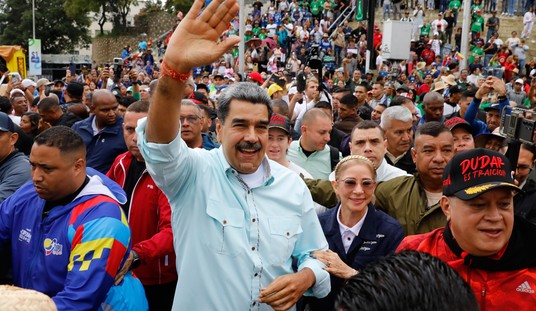Is this also part of the training kindergarteners are getting on what to do when a mass murderer bursts into the classroom?
It’s a brilliant ploy, evidence of a keen survival instinct. Maybe we should roll “cover yourself in your dead classmates’ exposed viscera” into the standard school safety protocols for five-year-olds.
The girl in question, Miah Cerrillo, is reportedly doing okay physically after being hit in the back by some bullet fragments. She’s doing less well mentally according to her aunt. “Around midnight my sister-in-law called me and she was just crying, like ‘I think it just hit Miah. I think everything came to reality now,'” she told a local news outlet. God help all of them.
11-year old Miah Cerrillo told me the gunman looked her teacher in the eye, said "goodnight," and shot and killed her.
The whole class was watching.
Then he started killing Miah's friends.pic.twitter.com/OYsbXnJqzb
— Nora Neus (@noraneus) May 27, 2022
Locking the doors to classrooms is part of Uvalde’s security plan but I don’t know how useful that plan is if there’s a window in the door that a shooter can breach and then reach through to unlock the door himself.
That’s one of the low-key most troubling elements of the massacre, though — Robb Elementary School didn’t skimp on security. They got a grant from the state of Texas a few years ago and put it to use, building perimeter fencing and instituting other measures designed to thwart a shooter, like locking classroom doors as a matter of habit. The school district even has its own small police force which conducted multi-agency security training exercises with Uvalde PD, the local sheriff’s office, and others. They didn’t neglect children’s safety, their precautions simply failed when tested. “These security measures are not effective,” said one expert who studied the effect of school security tactics in reducing gun violence. “And they are not catching up to the ease of access with which people are acquiring guns in the pandemic.”
Having local police confront the gunman immediately might have limited the loss of life but that option failed too. Cops elsewhere want to know why.
“Waiting an hour is disgusting,” said Sean Burke, a recently retired Lawrence, Massachusetts, school resource officer who is president of the School Safety Advocacy Council, which trains districts in how to respond to shootings. “If that turns out to be true, then it is a disgusting fact.”…
Waiting for specialized tactical units used to be standard practice in responding to shooters. That changed after the shooting at Columbine High School in Colorado in 1999, when police waited nearly an hour for a SWAT team to enter the building — during which time 12 students and one teacher were killed…
“If you’ve got somebody you think is actively engaged in harming people or attempting to harm people, your obligation as a police officer is to immediately stop that person and neutralize that threat,” said Don Alwes, a former instructor for the National Tactical Officers Association. “We don’t expect police officers to commit suicide in doing it. But the expectation is that if someone is about to harm someone, especially children, you’ve got to take immediate action to make that stop.”
John wrote last night about what a Texas DPS spokesman said when asked why cops didn’t barge in on the shooter. “They could’ve been shot, they could’ve been killed, and that gunman would have had an opportunity to kill other people inside that school,” he replied. Right, but … doing nothing also gave the gunman an opportunity to kill people inside the school. If you confront him, there’s at least a chance that you’ll shoot him dead before he can murder you or more children.
One Border Patrol officer was reportedly getting a haircut on Tuesday when he got a text from his wife, a teacher at Robb Elementary, telling him that a shooter was loose in the school. His daughter was enrolled there as well. Per the Post, he grabbed the barber’s shotgun, raced to the scene, huddled with other officers there, and formed a tactical unit that went in and freed classrooms full of kids, including his little girl.
I’m keen to know how many cops were on the scene, just waiting around when he arrived.
The most charitable explanation I’ve seen for why the police backed off comes from this piece about mass shootings. Yes, cops are now trained to intervene immediately when shots are fired but “[t]he approach changes if the gunfire stops, as it did in the Pulse nightclub shooting in Orlando in 2016, when the gunman barricaded himself in the bathroom with several victims. Barricaded hostage situations can be complex.” In that case, they tried negotiating with the shooter, who claimed he had explosives; when the police finally gave up and tried breaking into the bathroom, he started shooting again. But there’s no evidence that the Uvalde killer wanted to negotiate even when there were lulls between the gunshots. So what do you do in that scenario? Continue to sit back and hope that he’ll see the light of reason before he kills someone else?
I’ll leave you with this round-up of five important ways in which the police’s initial account of what happened have since changed.







Join the conversation as a VIP Member